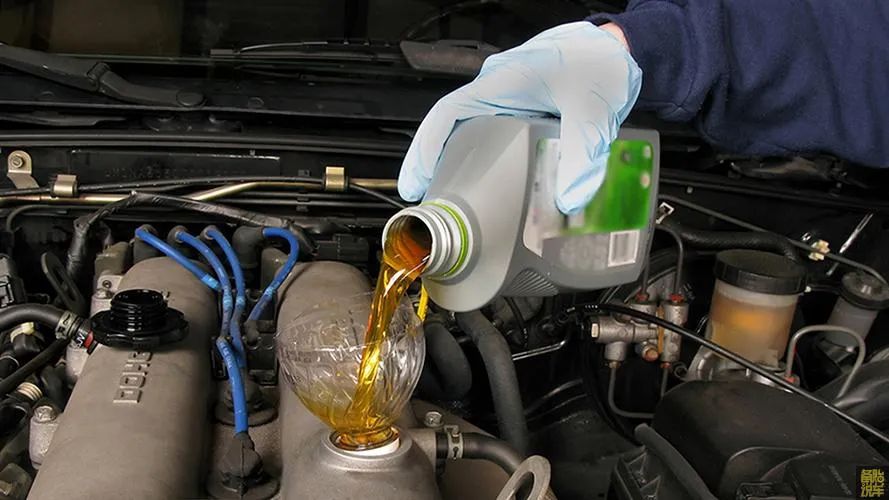“Don’t ignore that sluggish feeling – understanding the causes can save you money and protect your engine.”
Temporary Adjustments: New Oil Behavior
If your car feels less responsive immediately after an oil change, you’re experiencing a common phenomenon. Think of it like breaking in new shoes – initial stiffness improves with use.
Visualizing oil flow dynamics in a modern engine
Key Factors:
- Viscosity Shift: Fresh oil has 33.85% higher viscosity than degraded oil
- Break-In Period: Oil thickness reduces 26-32% within 6 driving hours
- Stabilization: Full adaptation occurs by 25 driving hours
Drive normally for a week. If performance doesn’t improve, further investigation is needed.
Critical Error #1: Incorrect Oil Viscosity
Using the wrong oil grade creates significant engine resistance – like forcing a marathon runner to wear snowshoes.

Viscosity grade comparison showing molecular structure differences
Performance Impact:
- 5W-30 creates 3-5 N·m more friction than 0W-20 in cold engines
- Fuel efficiency drops 0.7% with incorrect grade
Always reference your owner’s manual for exact specifications. Honda models demonstrate permissible adjustments (0W-30 vs 0W-20) but require strict adherence to manufacturer guidelines.
Danger Zone: Overfilled Oil System
Excess oil isn’t just wasteful – it creates parasitic drag that saps power like carrying extra weight up a hill.
Crankshaft operation in properly filled vs overfilled conditions
Operational Penalties:
- 15% power loss at maximum RPM
- 34.5 kW wasted vs 29.9 kW normal operation
- Increased risk of catalytic converter failure
Check oil levels using the dipstick method: Engine off for 10 minutes, level between MIN/MAX marks. Use a medical syringe for precise removal of excess oil.
Hidden Threat: Counterfeit Lubricants
Substandard oil is like using sandpaper instead of polish – it destroys engine components while appearing legitimate.
Authentic vs counterfeit packaging identification features
Detection Protocols:
- Holographic security seals on genuine products
- Batch number verification through manufacturer databases
- Laboratory viscosity testing for confirmation
Purchase from authorized dealers and retain receipts. Immediate replacement is critical if counterfeit oil is suspected.
Diagnostic & Repair Workflow
- Verify Grade: Cross-reference manual with oil container
- Level Check: Use calibrated dipstick on flat surface
- Drain Excess: Syringe removal for precise correction
- Lab Testing: Send sample for comprehensive analysis
Advanced spectrometry equipment used in oil analysis
FAQ: Common Oil Change Queries
Q: Should I change oil after 1 year with low mileage?
Yes. Oil degrades chemically over time regardless of use. Manufacturers recommend 6-12 month intervals.
Q: Can I skip other maintenance for cost savings?
No. Neglecting air filters or brake inspections creates costly repair risks. Follow full maintenance schedules.
